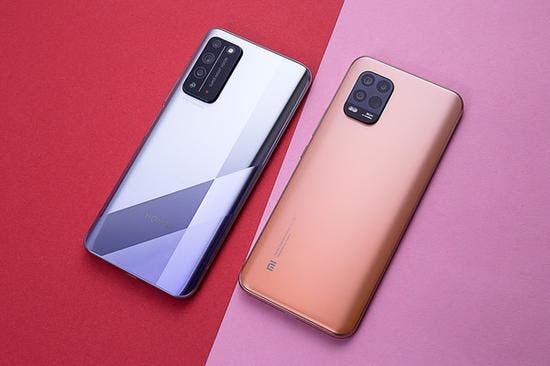It took only less than a year from 5G to become a standard option for all price segment phones. If you remember, previously, this option was available only on exclusive high-end models. On May 20, the Honor X10 was officially released, priced from 1899 yuan ($266). But it is worth noting that the low price does not necessarily mean low quality. This phone is equipped with the Kirin 820 chip, which supports NSA / SA 5G dual-mode network and a full range of 9 5G frequency bands. This is quite sufficient to rival the current 5G high-end flagships. However, there are other 5G models with similar price points that can make a tough competition as well. Say, the Xiaomi Mi 10 Lite and the Redmi K30 5G are also very competitive.
Also check Honor X10 launch article as well as the Xiaomi Mi 10 Lite launch article
So, everyone may wonder how to choose a smartphone in this price range. That’s why we have decided to come in with this comparison article, in which we will compare the aforementioned Honor X10 and the Xiaomi Mi 10 Lite. And if the 5G function is more or less identical, what about the overall performance, photography, endurance, and other options?
They adopt different designs
The Honor X10 adopts a pop-up camera design, that is, the front camera is hidden through the mechanical structure. The surrounding borders are further narrowed. So it could reach a screen ratio of 92%. Although the weight of the smartphone has increased due to the addition of the mechanical structure, it is still controlled at around 203g. Relatively speaking, the Honor X10 can bring a more immersive experience when watching videos, playing games, and browsing on the net.
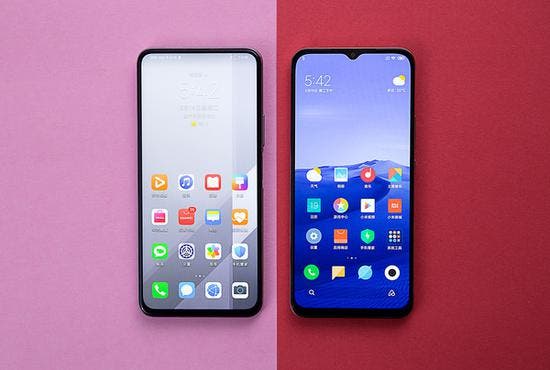
In this regard, the Xiaomi Mi 10 Lite uses a water drop screen design. But the “drop” part occupies a smaller area, reducing the impact of the special-shaped screen on the appearance as much as possible. In addition, the bezel of this phone has also been narrowed. But the chin is slightly wider. Because it does not use a mechanical structure, the weight of the device is also lighter, about 192g.
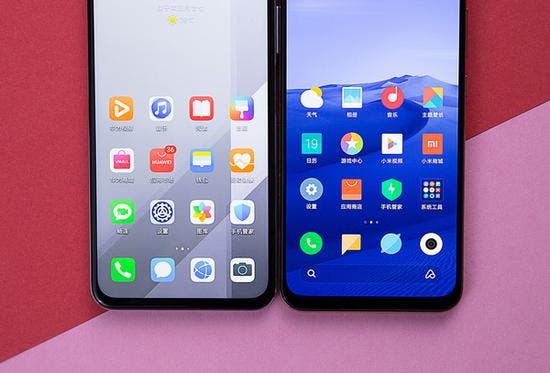
The Honor X10 sports a 6.63-inch LCD screen and has a side fingerprint. Although this unlocking method does not seem to be “black technology”, the speed of the physical fingerprint button is very fast. In addition, the Honor X10 supports 90Hz screen refresh rate and 180Hz touch sampling rate. Such a configuration combination is quite rare at this price.
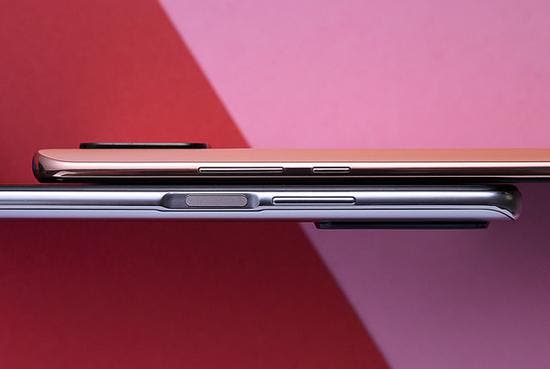
Compared with the original 60Hz, it can display more action screens, making the animation smoother, and this smoothness can be seen with the naked eye. The 180Hz touch sampling rate makes the screen handier and more sensitive. This can significantly improve the user experience.

The Xiaomi Mi 10 Lite uses a 6.57-inch Samsung AMOLED screen. So the color performance will be more accurate. This will be directly reflected in the photos, making them look more beautiful. This phone also supports 180Hz touch sampling rate. But the screen refresh rate is still 60Hz.

The design of the back of the Honor X10 is bolder than the previous generation. It is officially called the “Macro Shadow Phantom Change” design. Simply put, it introduces the design style of graphics segmentation, and then creates a kind of treatment through different bright surfaces. At the same time, the back of the phone has also been processed with a certain 3D arc to make it fitter to the palm. The camera part in the upper left corner of the fuselage also adopts a matrix design. It is decorated with a red dot.
In contrast, the back design of Xiaomi Mi 10 Lite is much simpler. The solid color back cover is implemented throughout, and because of the AG matte process, the smartphone is more comfortable to hold and is not prone to fingerprints. The quad-camera matrix module is also placed in the upper left corner of the fuselage and keeps a horizontal line with the Xiaomi logo.
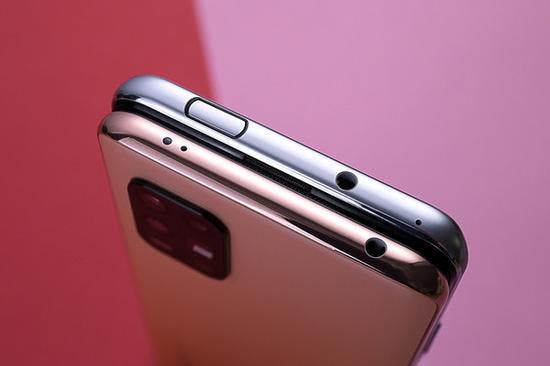
At the same time, both phones retain 3.5mm headphone jacks, which is worthy of praise.
Kirin 820 Does It Best To Beat Rivals
Currently, even the so-called thousand-yuan machines provide a strong performance. The two models we are comparing are no exception, and they can handle almost any task.
The Honor X10 sports the Kirin 820 5G SoC. The latter uses a 7nm process and 1 + 3 + 4 chip cluster. There is also a self-developed architecture NPU, which brings a stronger AI computing. In addition, the chip also integrates the same 5G baseband of the Kirin 990 5G and ISP 5.0 to enhance the overall performance of this chip.
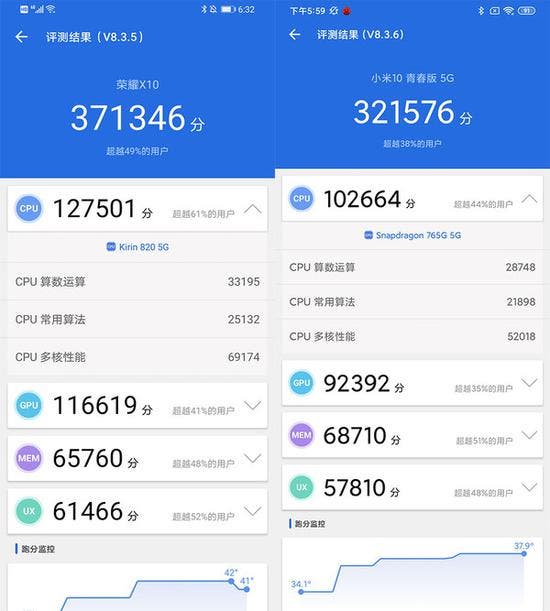
The Xiaomi Mi 10 Lite chose the Snapdragon 765G, which also uses the 7nm process. But this chip uses the Kryo 475 architecture and Adreno620 GPU. Its graphics computing performance compared to the Snapdragon 730 is improved by nearly 40%. There is an integrated X52 5G baseband to support 5G networks.
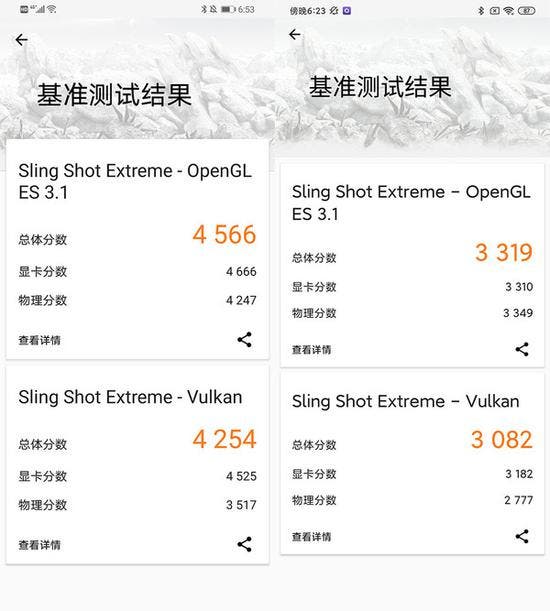
In the Geekbench 4 test, the Kirin 820 single-core running score was 3095 points, and the multi-core running score reached 9739 points. The Snapdragon 765G single-core and multi-core scores were 2827 and 7709 points, respectively. The gap between the two phones is quite obvious.
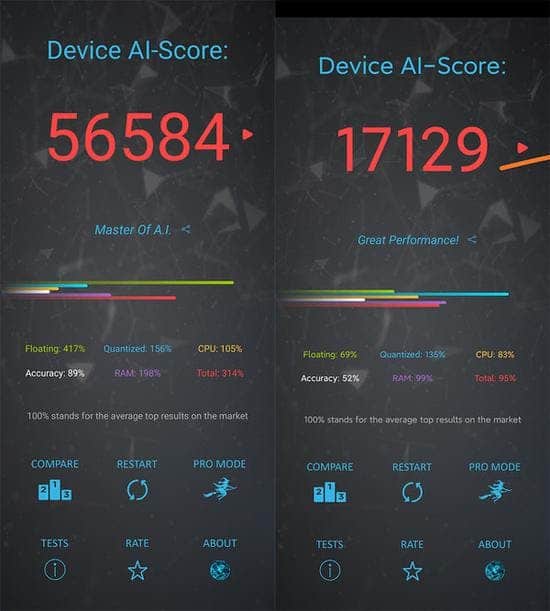
But it is not enough to rely on the CPU for performance output. We mean the GPU should also provide more powerful graphics processing capabilities. The Kirin 820 is stronger than the Snapdragon 765G in the Sling Shot Extreme and Vulkan mode tests in 3D Mark.
So what is the AI score of the two? In this sense, we took AI-Benchmark for the running score test. The Kirin 820 scored as high as 56584 points, while the Snapdragon 765G was only 17129 points. The gap is obvious!
Huawei Makes Great Cameras Even On Mid-Ranger Models
The Honor X10’s rear triple-camera combination is a 40-megapixel RYYB high-sensitivity lens, an 8-megapixel super wide-angle + depth of field 2-in-1 lens, and a 2-megapixel macro lens. It is worth noting that the main camera uses the IMX600 RYYB CMOS, relying on the RYYB filter lens to increase the light input of the lens by 40%. This ensures the excellent performance of this lens in daily photography scenes, especially at night.
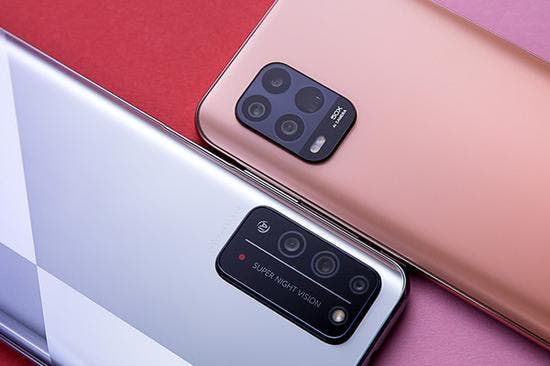
The Xiaomi Mi 10 Lite’s rear quad-camera combination includes a 48-megapixel ultra-clear main camera, 8-megapixel periscope telephoto lens, 8-megapixel ultra-wide-angle lens, and 2-megapixel macro lens. Relying on the periscope structure, this phone can achieve 5x optical zoom, 10x hybrid zoom, and the highest 50x digital zoom.
The Honor X10 enhances the “combat power” of the main camera, while the Xiaomi Mi 10 Lite is known for its telephoto lens. As for the actual shooting effect, let’s take a look at the samples.

Honor X10

Xiaomi Mi 10 Lite
We can see that the Honor X10 relies on the RYYB filter matrix and larger photosensitive components, showing more details in the dark.

Honor X10

Xiaomi Mi 10 Lite
In terms of the color performance, we can see the difference between the two imaging styles. In this scenario, the Honor model’s color temperature is cold, while Xiaomi’s is warm.

Honor X10

Xiaomi Mi 10 Lite
When taking macro photos, the Honor X10’s color performance is moderate, the imaging is clear, and it is very close to the colors seen by the naked eye. The Xiaomi Mi 10 Lite continued the warm color temperature style.

Honor X10

Xiaomi Mi 10 Lite

Honor X10

Xiaomi 10 Youth Edition
Looking at this set of night scene samples, the performance of the Honor X10 is very stable. Note that the high-rise buildings behind are also very clear. However, the Xiaomi Mi 10 Lite has obvious smearing. The color has overflowed, the color cast is serious, and the background image is also blurred.

Honor X10

It is worth noting that the above samples are taken by the main camera of the two phones. It can be seen that the Honor X10 relies on the 40-megapixel main camera and the accompanying IMX600 RYYB CMOS to obtain excellent picture effects in daily shooting scenes. Although the Xiaomi Mi 10 Lite does not perform as well as the X10 in low-light situations, it is also sufficient for daily use.
In addition, the Mi 10 will be more balanced in lens combination than the Honor X10, especially the addition of the periscope telephoto lens. This allows this phone to shoot farther away, and can achieve a maximum 50x digital zoom. The Honor X10 has a maximum zoom of only 10 times.
Xiaomi Mi 10 Lite
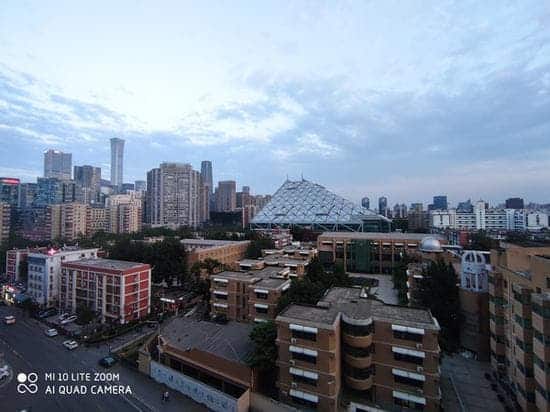
(Super Wide Angle)

(1x zoom)

(5x zoom)
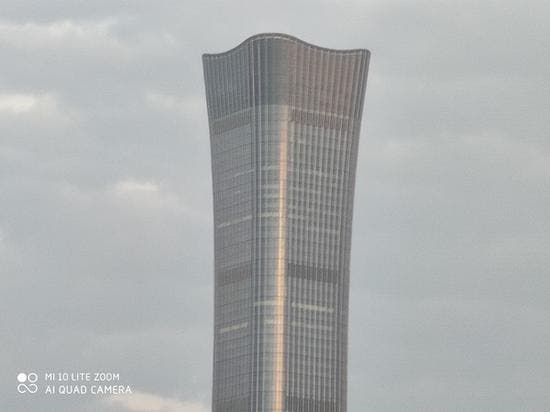
(10x zoom)

(50x zoom)
Honor X10

(Ultra Wide Angle)

(1x zoom)

(10x zoom)
The Bottom Line
After the comparison, we can write down that the Honor X10 is outstanding in terms of appearance, performance, photography, etc. Especially the high refresh rate, the addition of the Kirin 820, the 40MP main camera, and 5G support make it quite eye-catching. Although the Xiaomi Mi 10 Lite yields its today’s competitor in terms of performance and main camera, this phone comes with a periscope telephoto lens. It is rare in this price range. The shooting effect is good.
Follow Gizchina.com on Google News for news and updates in the technology sector.

